PRODUCT LIST
The Building of a LEED-Certified Green Data Center
LEED Green Building Rating System
Leadership in Energy and Environmental Design (LEED) is a voluntary rating standard aimed at defining a complete and correct green building standard, promoting the development of green integration technologies, and providing practical technical guidelines for the construction of green buildings. LEED is currently considered the most comprehensive and influential standard among environmentally-friendly buildings, green buildings, and building sustainability rating standards available today.
LEED is a performance-based standard that emphasizes the satisfaction of “Greening” requirements as a whole. It provides an environmental strategy for the design and management of buildings that reduces the emission of harmful greenhouse gases by reducing energy consumption and conserving materials. LEED embodies the logical use of resources and a holistic approach to building design.
The LEED green building rating system focuses on the sustainability of a building throughout its entire life cycle including its design, construction, fine-tuning, operations and demolition. The total engagement and cooperation of developers, architects, structural engineers, mechanical-electrical engineers, lighting designers, landscapers, builders, and supervisory units are essential.
LEED Certification Rating Components
The LEED rating system and its technical framework are composed of five key aspects and various indicators. Environmental impact is assessed on the basis of the Integrative Process (2 points), Location and Transportation (18 points), Water Efficiency (12 points), Energy and Atmosphere (38 points), Materials and Resources (13 points), Indoor Environmental Quality (17 points), Innovation & Design Process (6 points), and Regional Priority (4 points). An overall score is assigned to each indicator. There are four possible certification levels, and a rating of platinum (≧80 points), gold (≧60 points), silver (≧50 points) or bronze (≧40 points) as shown in Fig. 1 is issued to reflect the level of greenness.
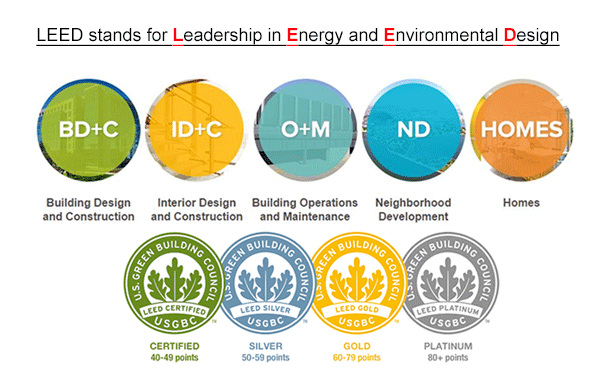
▲ Levels of LEED Certification
Key Elements of a LEED Data Center
As described above, a green data center’s LEED rating can be considered a general assessment of the entire life cycle rather than looking only at the PUE. The LEED rating system contains the following key elements:
-
Optimizing energy efficiency
Maximize the energy efficiency of the data center and its systems to reduce the environmental and economic hazards posed by excessive energy consumption. Energy simulation software can be used to compare energy consumption throughout the year against the baseline values defined in ASHRAE 90.1 and to analyze the energy-saving measures. The potential energy-savings and impact on costs of all affected systems can be forecasted and a score calculated based on the percentage of energy savings. A report from the U.S. Department of Energy indicated that data centers consume 100 times more energy than a standard office. Real-world measures found in addition to the power consumed by IT equipment, air-conditioning and UPS accounted for 97.8% of power usage by non-IT equipment. Improving the efficiency of air-conditioning and UPS is therefore just as important as improving the efficiency of IT equipment. -
Energy management
Measuring devices must be permanently installed and be able to collect data automatically. It must allow for remote access by users via web browsers. The energy consumption statistics must be sorted and analyzed through the energy management system to help users understand their energy consumption habits and identify wasted energy. The system also conducts energy efficiency monitoring with hourly, daily, monthly and annual management reports. The data must be retained for at least 18 months to provide a basis for continuous improvements to energy efficiency. -
Renewable energy
Renewable energy systems can be used to reduce the energy costs of the project. The score is then calculated based on the percentage of energy consumption met from renewable sources. -
Environmentally-friendly products
The use of environmentally-friendly refrigerants, the use of products with sustainability reports, and local products reduces the amount of environmental damage from carbon and GHG emissions during manufacturing and transportation. In other words, it is essential to reduce carbon emissions to a minimum.
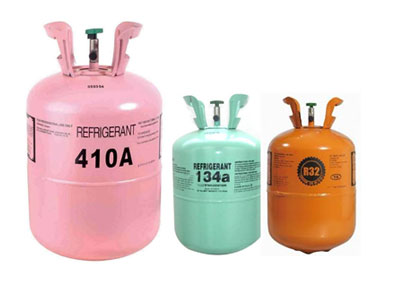
▲ Environmentally-friendly refrigerant -
Construction management
Non-hazardous construction and demolished building materials need to be recovered/and or re-used during the construction process to minimize the amount of waste produced. The air quality of the construction environment must be maintained, the techniques for working with volatile materials reviewed and management of the material inventory practiced. -
Commissioning
Performance verification is a requirement for green data center applications. The ASHRAE Guidelines define commissioning as “a quality-oriented process for achieving, verifying, and documenting that the performance of facilities, systems and assemblies meets defined objectives and criteria.” The execution of the commissioning process involves the owner, design unit, and construction unit working together. The planning phase, design phase, construction phase, system performance testing upon completion of construction and operations maintenance management must all adhere to the Owner’s Project Requirements (OPR) and Basic of Design. Commissioning can improve the energy efficiency of the data center.
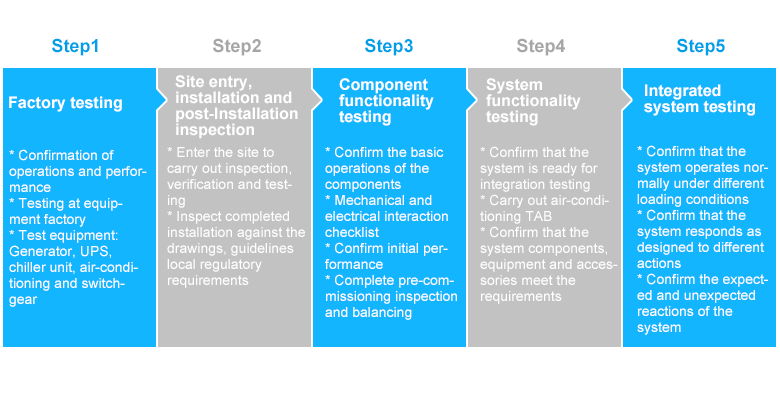
-
Operations & management
Once personnel and equipment have taken over the site, a Data Center Infrastructure Management (DCIM) system with visualization support should assist the managers with the continuous monitoring of energy efficiency so that the actual operational performance can be compared against the original design requirements. The manager also gains a picture of operator habits to identify opportunities to reduce the waste energy and continue to calibrate/optimize the system.
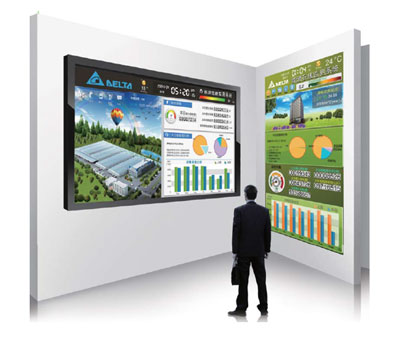
▲ Illustration of the DCIM system with visualization support
World’s First LEED V4 Certified Non-Monolithic Data Center
In March 2018, Delta’s Wujiang Data Center became the first non-monolithic data center in the world to achieve the LEED v4 ID+C gold certification. Planning, design and construction were based on the B+ Chinese national standards and LEED green data center. In addition to the introduction of energy-efficiency solutions, a facial recognition system was also installed due to operational security requirements for personnel management.
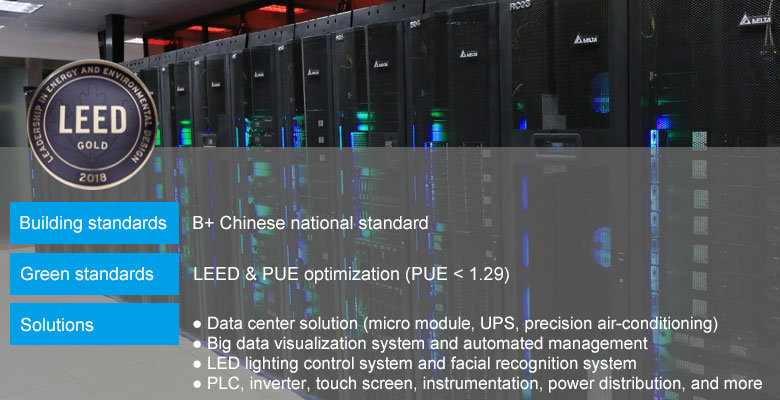
▲ Delta’s Wujiang data center
-
Optimization of energy efficiency is the key for green data centers
The Ministry of Industry and Information Technology (MIIT) in China also called for all new large cloud computing data centers constructed from 2015 onwards to achieve a power usage effectiveness (PUE) rating of less than 1.5. The Delta Wujiang data center’s PUE for the year of 2017 was 1.29 and was 41% higher than required by the MIIT. Methods used include:-
Separation of cold/hot aisles
The separation of cold and hot aisles is probably the simplest and most effective energy-saving measure as shown in Fig. 6. Separating the cold and hot areas greatly reduces the mixing of cold and hot air. It eliminates the vertical temperature gradient at the front of the rack that increases the temperature of IT equipment inlets, reduces cooling efficiency and results in IT equipment crashing due to overheating. At the same time, gradually increasing the temperature of the cold aisle through empirical testing can help reduce the amount of power consumed by air-conditioning. However, if the temperature exceeds 25℃ this may increase the power consumption of IT equipment instead and increase the likelihood of crashing from over-heating. Setting the cold aisle temperature to 25℃ can therefore accomplish the goal of optimizing the power consumption of air-conditioning.
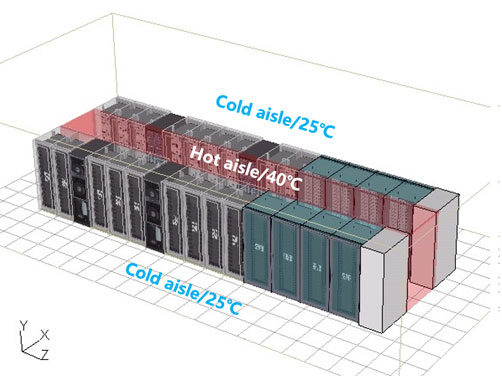
▲ Separation of cold and hot aisles
-
Placing in-row air-conditioning near hot spots for effective heat removal
The air flow of modular data network equipment is generally horizontal so the use of modular in-row air-conditioning adheres to the same horizontal flow path. This reduces the distance to heat sources and greatly shortens the air circulation path as shown in Fig. 7. Static pressure loss by the fan and heat loss from the aisles are reduced for more effective removal of hot spots. -
Use modular system units
Master-slave control is used by the main unit to collect the temperature and humidity parameters from multiple modules. The average is then used to realize synchronized control.
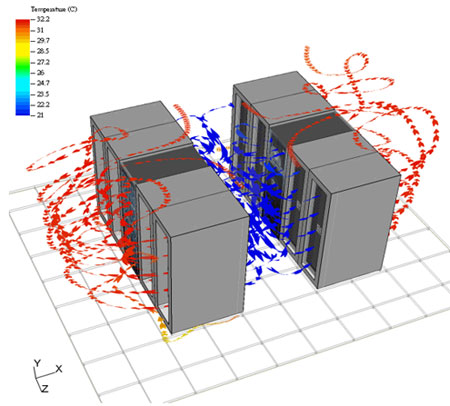
▲ Air flow of in-row air-conditioning illustrated
-
High-performance inverter air-conditioning equipment
The IT equipment deployed in data centers often needs to be gradually added during the course of operations. Air-conditioning equipment must also be included and redundancy factored in. The use of variable-speed air-conditioning in this situation increases flexibility. For low to medium loads when multiple in-row air-conditioning units are running simultaneously, the high-efficiency EC fan can run more slowly and the compressor can also vary the frequency for flow control. By adjusting the run speed based on actual load, power attrition can be reduced (e.g. lowering wind speed by 10% reduces power consumption by 27%) to achieve high efficiency at low loads.
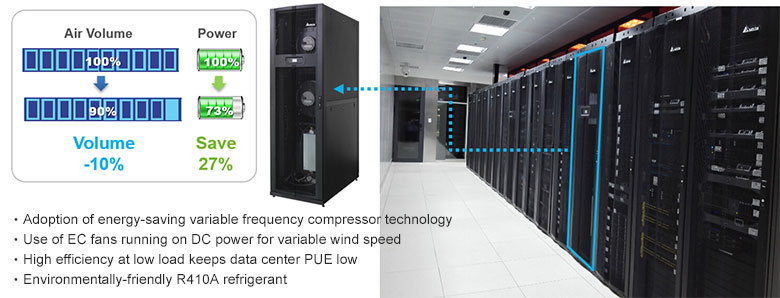
▲ High-performance inverter air-conditioning equipment
-
Leveraging natural resources (energy-saving new wind system)
Analysis of the local climate data for Wujiang found that new wind can be introduced for natural cooling for half of the years shown in Fig. 9. Taking advantage of this outstanding natural resource will greatly reduce the consumption of energy. New wind fans and ventilation fans combined with PLCs were used for natural cooling with new wind as shown in Fig. 10. The introduction of new wind is based on the outdoor temperature, relative humidity, heat value and indoor requirements. When the outdoor requirements are all lower than the set values then new wind takes over. The in-row air-conditioning system can now be switched off to minimize energy consumption.
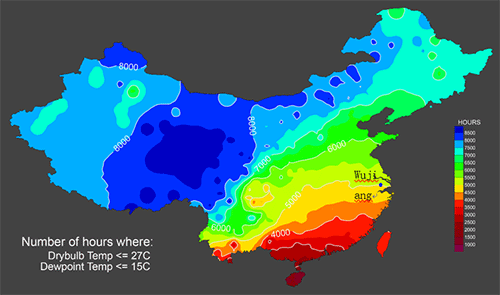
▲ Temperature distribution in China throughout the year
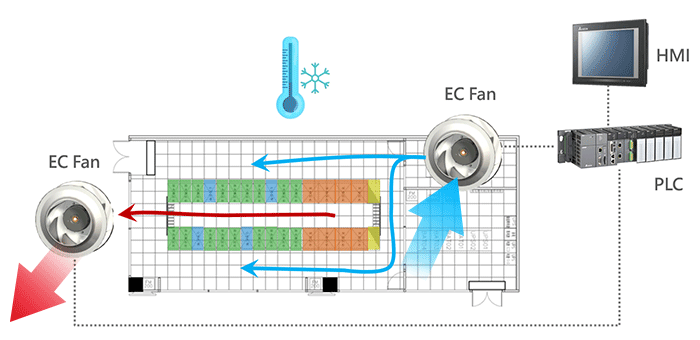
▲ Illustration of energy-saving new wind system
-
High-efficiency modular UPS
In conventional data centers the load is around 30~40% of the UPS. The efficiency of a conventional UPS is approximately 87%. If a high-efficiency modular UPS (DPH) is used instead, then its operating efficiency can be increased to 95%, or 8% higher than the conventional method. If the load is 100kW then this translates into 70,000 kWh in energy savings a year. Modular UPSs can be scaled to the IT equipment to keep the UPS running at high-efficiency.
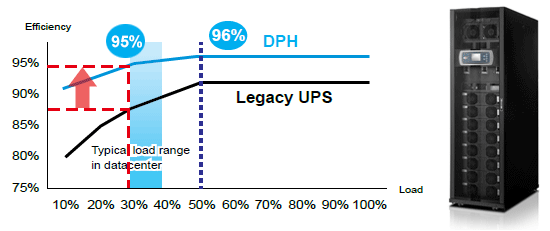
▲ Comparison of high-performance modular UPS (DPH) and conventional UPS efficiency
▲ High-performance modular UPS (DPH)
-
-
Continued optimization of the green data center and visual DCIM system
The visualization component of the visual data center infrastructure management (DCIM) system supports category, time, organization, and indicator management. The energy usage analysis report can be presented as trend, bar and pie charts to give the manager a quick picture of critical information such as IT infrastructure operations and maintenance, asset management, utility and air-conditioning management, energy management, environmental control, security surveillance, access control and space configuration. A smart data center with DCIM can automatically adjust the data center environment to keep the IT equipment running normally.
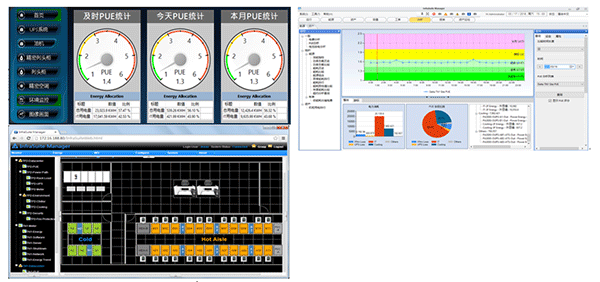
▲ DCIM system with visualization support -
Green electricity from solar power
Solar panels with 403.2 kWp of generating capacity were installed on the roof of the project building as shown in Fig. 13. The 430,000 kW of power generated every year for the factory and data center accounts for around 4.05% of the data center’s annual power usage. The Delta data center at its Americas headquarters is completely powered by renewable energy.
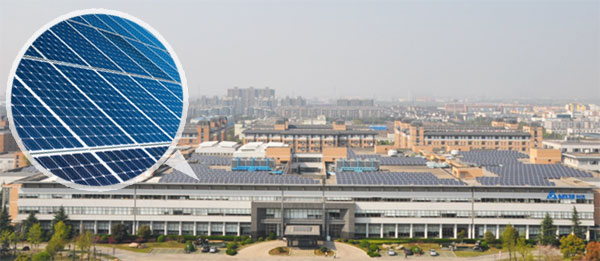
▲ Solar power -
Green O&M - Automated Fault Detection and Diagnostics and Asset Inspection
If a fault at the data center occurs due to power outage or human error then detection and recovery is relatively easy. What if a fault in the data center gradually crept in during routine operations? A data center is usually fitted with many sensors, drivers and equipment such that a massive amount of data is collected. If a sensor reports every second then that means 30 million entries in a year. If there are 100 sensors then that means 3.1 billion entries in a year. The Automated Fault Detection and Diagnostics (AFDD) function in the Data Center Infrastructure Management (DCIM) system converts this data into information then analyzes the information to produce the reports needed by the manager. Diagnosing faults at a data center is like a doctor seeing a patient. Analytical rules are formulated using different indicators and past experience to identify the likely location of the fault and remind the manager to undertake preventive maintenance. The reliability of the data center is then enhanced. Another function is asset inspection. Inspection targets are created through the system and a QR code applied to the target. Scanning the QR code with a mobile phone uploads the relevant inspection records to the system for analysis. Upper management can use the system for audits as well, reducing the amount of printed records and speeding up analysis.
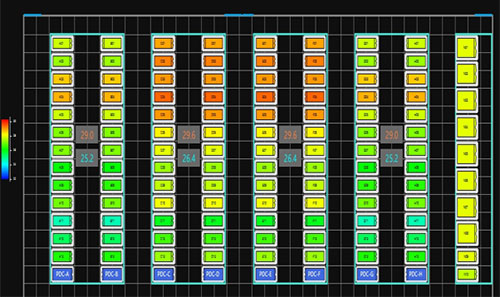
▲ Automatic Fault Detection and Diagnosis example
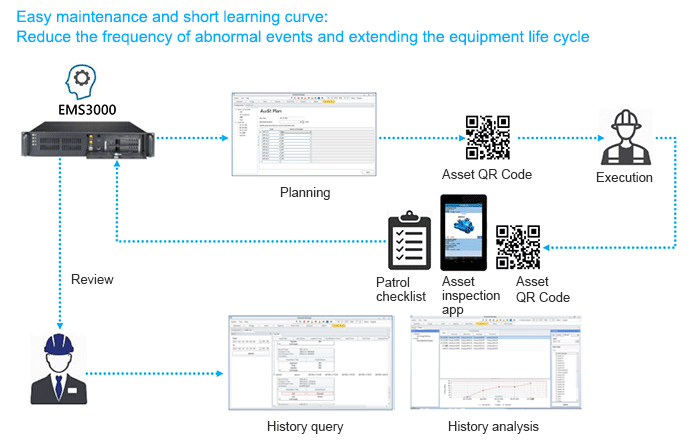
▲ Asset inspection using a mobile phone
Summary
Living standards are gradually improving and technology is developing at a rapid pace. Saving energy to be green is an ideal that all people are now embracing. The emergence of IoT, AI, AR/VR, cloud, mobile and big data analytics technologies has made green, energy-efficient data centers the top priority in the development of the industry. The building of energy-efficient green data centers takes a certain amount of creativity and should not be constrained by conventional thinking. For example, Foxconn’s data center in Guiyang takes advantage of Mother Nature’s resources.
For data center managers, a good DCIM system should be an integrated platform that simplifies management through automation, visualization and early-warning using AFDD. By making management and analysis faster and convenient for managers to carry out, by finding and correcting areas of low efficiency in IT, and by reducing carbon emissions, the ultimate goal of optimizing the performance and life cycle management of the data center can be achieved.












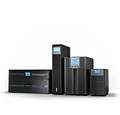
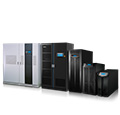
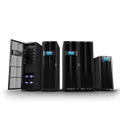
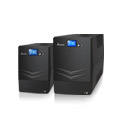
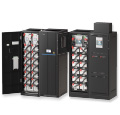
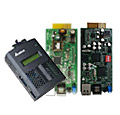
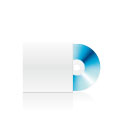
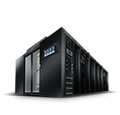
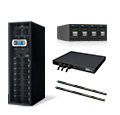
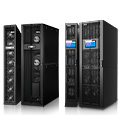
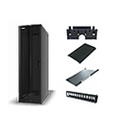
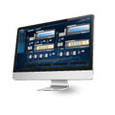
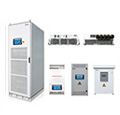
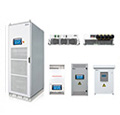






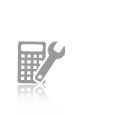





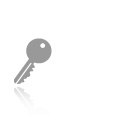





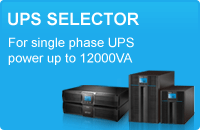
.gif)
